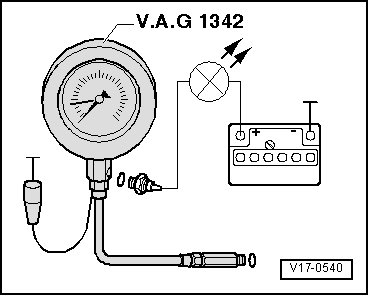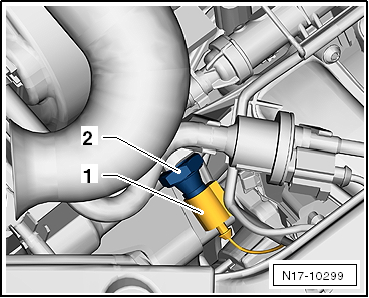| –
| Screw oil pressure switch -F1- into tester. |
| –
| Screw tester into cylinder head in place of oil pressure switch. |
| –
| Connect brown wire of tester to earth (-). |
| –
| Connect voltage tester -V.A.G 1527B- to battery positive (+) and oil pressure switch using cables from auxiliary measuring set -V.A.G 1594C-. |
| –
| Start engine and increase revolutions slowly. At 0.3…0.6 bar the LED must light up, otherwise renew oil pressure switch. |
| Tightening torque: oil pressure switch: 20 Nm |
| –
| Increase engine speed further. At 2,000 rpm and an oil temperature of 80°C the oil pressure should be at least 2.0 bar. |
| At higher engine speeds, the oil pressure must not exceed 7.0 bar. |
|
|

|

 Note
Note


 Note
Note
